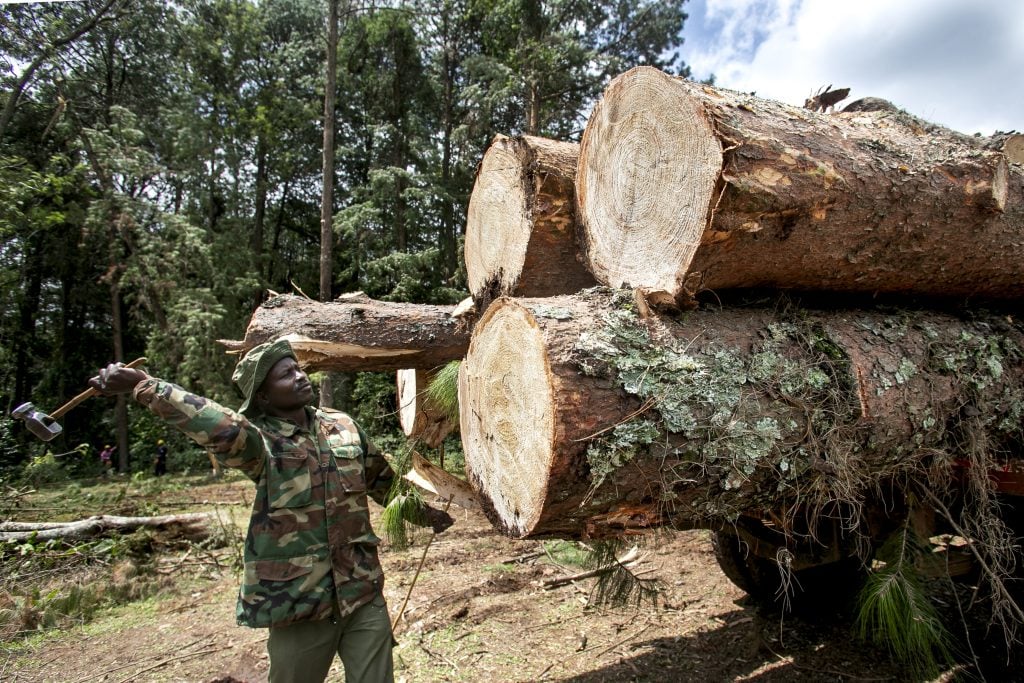
Forestry is not an industry that tends to move quickly. Trees need years to grow, even in tropical climates. But there are clear trends supporting the worldwide growth of commercial forestry. One factor is the rising consumer demand for timber products. Wood is increasingly seen as a more sustainable alternative to materials such as concrete, which has been the world’s dominant construction material for decades. Paper products are also viewed as preferable to plastic by many consumers.
The rise of carbon offsetting is another key driver. Trees remove carbon dioxide from the atmosphere and landowners that plant trees can sell carbon credits, allowing companies to ‘offset’ their emissions from burning fossil fuels.
While ‘carbon forests’ can be planted for the sole purpose of removing carbon dioxide, commercial forestry plantations can also sell carbon credits. When trees are planted on previously unforested land, they absorb or ‘sequester’ carbon as they grow. Then, at least in theory, the carbon is permanently stored in a wood product after the trees are harvested. Plantation operators can thus sell carbon credits, on top of their main business of selling timber.
Africa appears set to benefit from these global trends, partly because of the climatic conditions that prevail across large parts of the continent. Trees can generally grow much faster close to the equator. Fast-growing trees can be harvested more regularly, generating more revenue for forest owners. They also sequester carbon more quickly as they grow, then produce more finished products that store carbon indefinitely.
In spite of these advantages, growing Africa’s forestry sector will be far from easy. Forestry is a highly technical industry; it also requires forest owners to navigate various complex issues, including land rights, water use and biodiversity. And some will never be convinced that commercial plantations actually deliver benefits to the continent and its peoples.
Forestry has always been controversial. Monoculture timber plantations are sometimes found where ancient and exceptionally biodiverse rainforests once stood. Worldwide, an estimated 13% of deforestation is caused by tree plantations for paper and wood expanding into areas of native forest.
‘Land-grabbing’ is another concern. Kwami Kpondzo, Africa coordinator at the non-profit Global Forest Coalition, warns that forestry plantations inevitably require a “huge amount of land”. In some cases, planting new plantations involves communities being displaced from their agricultural land, he says.
Kpondzo’s view is that there is no real way to mitigate the more damaging impacts of commercial forestry on the continent. “We can’t do commercial forestry in Africa without social consequences,” he says.
Forestry practitioners, however, argue that their operations can bring benefits to communities. Mark Hogg, CEO of Mere Plantations, which produces mainly teak across two sites in Ghana, says that forming good relationships with local stakeholders is “absolutely critical” to successful forestry.
He reports that Mere consulted the government and Ghana’s Forestry Commission, as well as the district assembly and the local traditional authorities, before acquiring its land. “We got them all on board,” he says. Local communities receive a percentage of Mere’s revenues via the Forestry Commission and the company runs various social programmes in response to community needs.
“We fund what the community genuinely needs, not what we as Westerners sitting in our offices think the community probably needs,” says Hogg. “That’s a really big difference.”
He does see, however, that other operators “constantly” take the wrong approach. It is common, he says, to see NGOs approach the sector with good intentions but without strong “execution capabilities”. Equally, he says some plantation operators have a “corporate mentality” and run into trouble when they try to impose their solutions on local communities.
Biodiversity benefits?
It might be easy – and often justified – to criticise commercial forestry in Africa and other tropical parts of the world. Yet the industry can also argue that it offers sustainability benefits, particularly when forests are planted on ‘degraded’ land.
Eva Warigia, associate director at investment manager New Forests, notes that the Forestry Stewardship Council, which runs the best-known certification scheme for forest products, requires that plantations dedicate at least 10% of their area to restoration and conservation. She says that New Forests seeks to identify “biodiversity corridors” in its plantations. Conserving these provides vital habitats, with biodiversity then using the corridor to expand into the rest of the plantation.
Meanwhile, the need for sustainable forestry is now receiving more attention. The European Union passed a regulation in 2023 that bans companies from importing certain goods unless they are ‘deforestation-free’.
Warigia says that Africa can play a major role in fulfilling global demand for sustainable forest products. There is more land potentially available for forestry in Africa than in most other parts of the world, she notes. And Africa itself can be a large market for timber products.
Indeed, with rapid population growth, she sees demand for timber increasing in Africa’s real estate sector. Timber can also play an important role in electricity transmission and digital connectivity, Warigia says, with wooden poles needed to help carry cables overland.
Carbon forests?
But it is the continent’s potential for ‘carbon forests’ that is generating the most hype. A forest could be planted purely for carbon sequestration purposes and its owners would derive their income from selling carbon credits.
But Warigia says that plantation forestry operations that carry out rotational harvesting can also make a strong contribution to carbon sequestration. “Every time you harvest, you replant. With each new seedling comes a new opportunity for carbon sequestration,” she says. “In that way, we are able to create a rotational platform, within which every year we create a new base for carbon sequestration, which makes plantation forestry one of the most effective areas of expanding the carbon sequestration market.”
Yet most commercial forestry operators are still working out how to profit from the sale of carbon credits. Warigia emphasises that New Forests is primarily focused on producing timber. It has not yet decided how to create a revenue base from the carbon markets.
Similarly, Hogg cautions that commercial foresters cannot base their strategies around carbon revenues. “I think carbon revenue has to be an additional revenue stream to the project,” he says, noting that Mere expects to generate around 5% of its revenues from carbon credit sales. The impact on the business will be “material but not game changing”, he says.
Complexities
Whether some of the newer entrants to Africa’s forestry sector truly understand the limitations of the carbon markets, let alone the many other complexities involved in managing forests, remains to be seen.
Over the past year, several Gulf-based investors have pledged to purchase vast areas of land in Africa, both to conserve existing forests and to plant new forests on ‘degraded’ land. Their aim in doing so is to produce carbon credits that can be sold either to national governments or companies operating in ‘hard-to-abate’ industries. Dubai-based investment vehicle Blue Carbon LLC, for example, has signed MoUs with several African countries including Liberia and Zimbabwe to develop projects that will extend across as much as 10% of these countries’ land areas.
Hogg is not optimistic that projects of this nature will succeed. “A lot of people have gone out and said they’re going to plant carbon forests, but they’re going about it wrong,” he says. “They need to plant a forest, they need to go onto a rotational coppice basis as opposed to clear felling, and they then will find that the carbon just happens.”
These projects are also liable to generate exactly the kinds of community conflicts that advocacy groups like the Global Forest Coalition are concerned about. Dozens of NGOs signed a statement last July denouncing Blue Carbon’s proposed land deal in Liberia, warning it could affect the livelihoods of one million people. In response, Blue Carbon says it is committed to “engaging local communities”.
There is certainly much room for improvement in how forest projects in Africa are managed. And there is clearly a long way to go before Africa’s forestry sector can fulfil its potential.
A February 2024 report commissioned by the charitable foundation Gatsby Africa and private equity firm Criterion Africa Partners states that commercial forestry “remains nascent, and the value chain remains undeveloped” on the continent. The report found that “commercial investments have largely underperformed, resulting in a significant loss of investor capital” over the past 30 years.
While improvements will not materialise overnight, Hogg does see “traction” in the sector, although he notes that different countries are moving at different speeds in developing commercial forestry. Ghana is one of the leaders on the continent, he says, with Kenya and Cote d’Ivoire among other countries making good progress.
Ultimately, he says, developers need to have an excellent understanding of local growing conditions for different tree crops, as well as maintaining strong community relations. Finding success in African forestry comes down to “right tree, right place”, he says.






Recent Comments